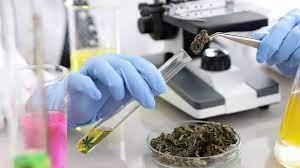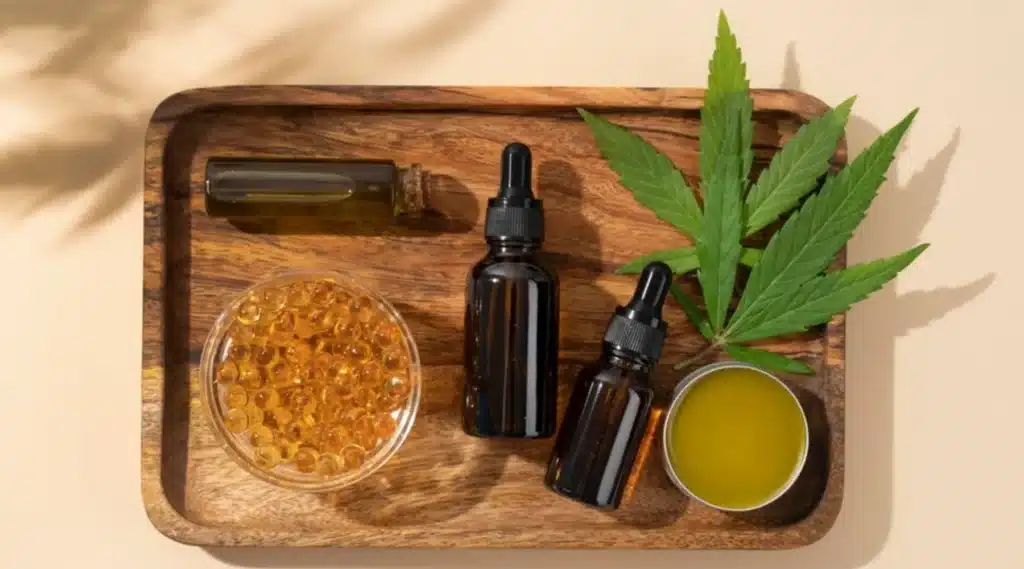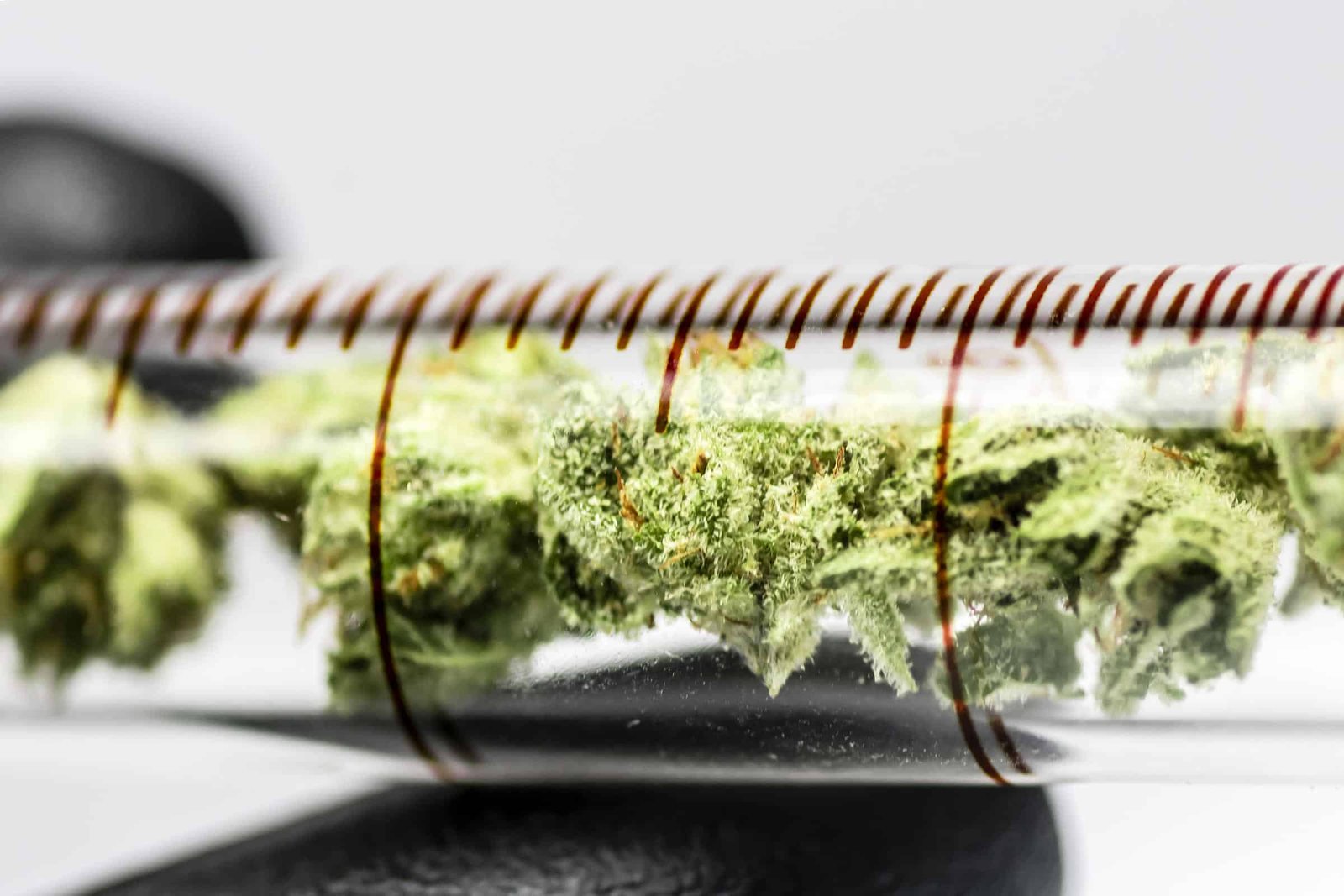Cannabis distillates are the most refined form of extracts with high potency. To create these highly concentrated extracts, sophisticated extraction and purification processes strip away plant matter, waxes, and other compounds, leaving behind clear, viscous oil often containing 80-99% cannabinoids.
However, premium cannabis distillate production requires precise control over numerous variables throughout the extraction, distillation, and refinement processes. Without proper quality control, distillates can contain harmful residuals or contaminants. Lab testing of cannabis distillates can help evaluate distillate quality, from potency and terpene profiles to residual solvents and potential contaminants.
In this guide, we will explore how to test the quality of cannabis distillates in a lab setup.
Sections
ToggleWhy Lab Testing for Cannabis Distillates Is Crucial

Lab testing is more than a formal compliance; it guarantees the safety and quality of cannabis distillates. Comprehensive testing confirms the accurate potency levels match product labeling for correct dosing.
- Ensures Safety: Laboratory analysis identifies potentially harmful contaminants, including heavy metals, pesticides, and residual solvents.
- Confirms Potency: Lab testing verifies cannabinoid concentrations and ensures they match labeled percentages.
- Meets Compliance Standards: Regulatory testing is essential for legally distributing cannabis products in licensed markets.
How to Identify High-Quality Cannabis Distillates in a Lab Setting

1. Cannabinoid Potency Testing
The primary lab analysis measures the most potent cannabinoids in the distillates.
High-quality cannabis distillates should have clearly defined and consistent cannabinoid profiles. The two most widely used techniques are HPLC (High-Performance Liquid Chromatography) and GC (Gas Chromatography). These lab tests measure concentrations of:
- THC (Tetrahydrocannabinol)
- CBD (Cannabidiol)
- Minor cannabinoids like CBG or CBC
Any mismatch between labeled and tested cannabinoid values is a red flag. Quality cannabis distillates have high potency without dilution or synthetic additives.
2. Terpene Profile
For terpene analysis, GC-MS (Gas Chromatography-Mass Spectrometry) testing is utilized. High-quality cannabis distillate contains natural terpenes that complement its cannabinoid profile. Sometimes, producers carefully reintroduce terpenes post-distillation.
Lab testing identifies terpene compounds such as myrcene, limonene, pinene, and linalool. Furthermore, testing can detect any artificial terpene additives. It can also identify degraded terpenes that appear as oxidized compounds or unusual molecular fragments due to excessive heat exposure or improper storage conditions.
3. Residual Solvent Levels
Cannabis distillation often involves solvents like ethanol or hydrocarbons. However, any remaining residue must fall within acceptable safety limits (usually < 5000 ppm, depending on the solvent and jurisdiction).
Gas Chromatography detects:
- Butane, propane, pentane (commonly used hydrocarbons)
- Ethanol and isopropyl alcohol
- Acetone or methanol (harmful contaminants)
A clean lab report ensures no lingering solvents that could pose health risks.
4. Contaminant Screening
Modern testing protocols like ICP-MS (Inductively Coupled Plasma Mass Spectrometry), LC-MS/MS, and qPCR allow screening distillates for contaminants like heavy metals, pesticides, and microbial presence.
- Heavy Metals: Laboratory analysis screens for lead, cadmium, mercury, and arsenic concentrations that must remain below regulatory thresholds.
- Pesticides: Comprehensive pesticide panels can detect agricultural chemicals that could concentrate during extraction processes.
- Microbial Presence: Lab testing can identify harmful bacteria, yeast, mold, and pathogenic organisms in cannabis products.
5. Physical Characteristics Observed Under Lab Conditions
Laboratories can also conduct standardized visual assessment of cannabis distillates under consistent lighting and temperature conditions. Premium distillates show these physical characteristics:
- Color: Light golden to amber coloration. It indicates proper purification, while darker brown or black hues suggest oxidation, overheating, or impurity retention.
- Viscosity: Optimal thickness and flow demonstrate proper refinement quality and decarboxylation levels without degradation.
- Crystallization: High-CBD distillates exhibit clean, uniform crystallization patterns at room temperature, indicating purity.
How to Read and Interpret a Certificate of Analysis (COA)
Certificate of Analysis is the document that labs provide after carefully analysing and determining the quality of a product. Here are the parameters it covers:
1. Cannabinoid Profile: Review the details of total cannabinoid percentages and individual compound concentrations in both the product label and COA to verify accuracy and consistency.
2. Residual Solvents: Any detected solvents must fall within regulatory limits. Here’s a list of accepted limits for residual solvents in cannabis products.
3. Contaminant Screening: COA must have a “pass” status for all heavy metals, pesticides, and microbial tests with actual numerical values provided.
4. Lab Accreditation & Batch Numbers: COA for any cannabis product must have the lab’s ISO/IEC 17025 accreditation status, and batch numbers must match product packaging.
5. Third-party Verification: Products offering independent laboratory testing certification demonstrate unbiased results without potential conflicts of interest from in-house testing facilities.
Common Signs of Low-Quality or Contaminated Distillate
Apart from the lab testing details in the COA, there are some other signs of low-quality or contaminated cannabis distillates:
1. Murky or Brown Appearance: Dark coloration indicates cannabis distillate oxidation or contamination from improper extraction techniques.
2. Inconsistent Texture: Any signs of separation, crystallization irregularities, or unusual viscosity suggest processing flaws or contamination issues.
3. Questionable Additives: Additives like cutting agents, artificial flavoring, or undisclosed compounds indicate adulteration leading to compromised quality standards.
How Root Sciences Equipment Helps Achieve High Lab Standards

Root Sciences invests extensively in modern technology to manufacture laboratory-grade equipment with automated features that minimize human error and maximize product consistency.
Our commercial distillation systems enable reproducible results that consistently pass comprehensive laboratory testing protocols. We have equipment for:
- Precision Separation: Root Sciences’ advanced distillation equipment enables precise temperature and pressure control for optimal cannabinoid and terpene separation.
- Automated Compliance: Our integrated monitoring systems ensure consistent processing conditions, ensuring regulatory compliance and quality standards.
- Terpene Retention & Reintroduction: Specialized collection and reintroduction systems preserve natural terpene profiles throughout the distillation process.
Conclusion
Identifying high-quality cannabis distillates in laboratory settings involves comprehensive analytical testing. It’s a multi-stage process that evaluates several parameters from cannabinoid potency and terpene profiles to contaminant screening and physical characteristics.
Reliable lab testing provides crucial insights into product safety, efficacy, and manufacturing quality by employing sophisticated instrumentation, including HPLC, GC-MS, and ICP-MS. With cannabis regulations evolving, laboratory testing standards will likely become more stringent, requiring producers to use precision equipment to produce the highest quality cannabis distillates.



